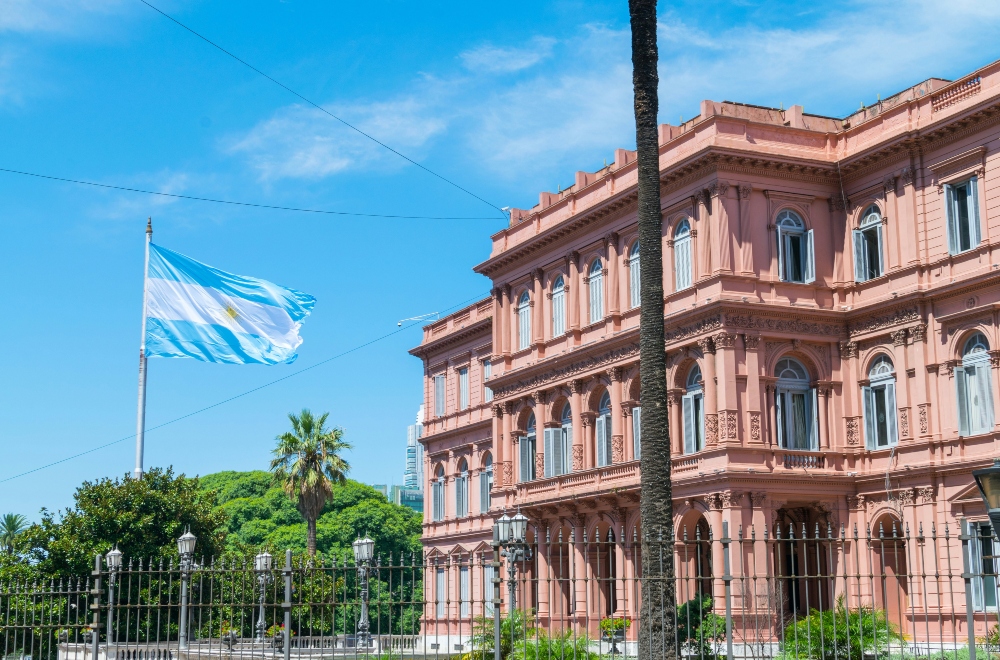Buenos Aires has been on your bucket list for a long time and you’re finally able to plan a trip to this electric city—next what? Stepping into the capital of Argentina for the first time feels thrilling! Winding through the grand avenidas criss-cross lively barrios, watching traffic hums past the Obelisk, and enjoying tango music spills out of old cafés could be dreamlike for you. But, as a visitor, the big question arises: how to move between it all without losing precious time? Well, you’ve landed at the right place as this guide compares the Buenos Aires tourist bus with the city’s public transport so you can match your transport choice to your travel style, budget, and energy levels. Read along to know more about Buenos Aires bus tour options and share it with your friend who is planning a trip to the city!
Getting Around Buenos Aires – What Tourists Need to Know
Buenos Aires is large and spread out, with key neighborhoods like Microcentro, San Telmo, La Boca, Recoleta, and Palermo located several kilometers apart, so walking everything in a day or two isn’t realistic. The city has a dense network of buses (colectivos), a metro system (Subte), and suburban trains, all of which locals use daily with a reloadable SUBE card. For visitors, this means plenty of options, but also a learning curve with routes, card top-ups, and navigation apps.?
Public transport is generally frequent and budget-friendly, especially the Subte and colectivos, which run across most tourist areas and operate long hours. However, a typical sightseeing day means stringing together several journeys, making it easy to lose time in transfers, waiting, or backtracking. That is where structured options like the Buenos Aires tourist bus come in, offering a ready-made sightseeing route that connects the big-name sights for you.?
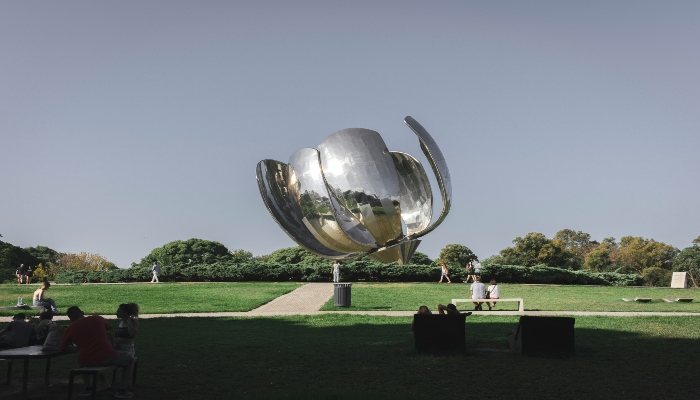
Image credit: Kirill Burov for Unsplash
The Tourist Bus Buenos Aires – Easy, Structured Sightseeing
The Buenos Aires tourist bus isn’t meant to replace the city’s transport network—it’s built to make sense of it. When you read the Gray Line sightseeing bus details, you’ll get to know that it works as a curated loop through the capital’s greatest hits, a route that threads together the historic center, the color and chaos of La Boca, the quiet elegance of Recoleta, and the leafy sprawl of Palermo. Instead of juggling Subte lines or guessing which colectivo heads where, you simply follow the circuit and dip in and out as you please. Tickets usually run on 24- or 48- or 72-hour passes, which keeps things simple: once you’re on, the city is yours to roam.
On board, the experience feels closer to a moving gallery than a bus ride. Multilingual audio guides walk you through the city’s layers—why a façade matters, who once lived behind those balconies, how a neighborhood changed after a certain moment in history. It’s the kind of context you rarely get while riding local transport.
Buses roll through on a predictable rhythm—roughly every 20 to 30 minutes, though the pace shifts a little with the season—so hopping off never feels like a gamble. Spend time in a museum, wander a market, linger over a café cortado; when you’re ready, the next bus becomes your bridge to the following chapter of the city. No retracing your steps, no fiddling with apps, just a steady rhythm that lets Buenos Aires unfold naturally.

Image credit: Gustavo Sánchez for Unsplash
What the Sightseeing Bus Experience in Buenos Aires Is Really Like
Riding the Buenos Aires sightseeing bus feels deliberately relaxed: you climb to the open-top deck, feel the warm breeze, and watch the skyline shift from office towers in Microcentro to the colorful facades of Caminito in La Boca. As the bus glides past landmarks like Recoleta Cemetery, Teatro Colón, and the riverside in Puerto Madero, the audio guide fills in context, so you understand what you are seeing rather than just snapping photos.?
Because the route is curated around top attractions, you can structure your day around the stops: hop off in La Boca for photos and lunch, ride on to Recoleta for the cemetery and cafes, then continue to Palermo’s parks and boutiques, all on the same ticket. Practical touches like clearly marked stops, scheduled departures, and an upper deck view mean you spend more mental energy on enjoying the city, not decoding maps.?
[product_card="41607, 40246, 40248?]
Is the Tourist Bus Worth It in Buenos Aires?
Whether the Buenos Aires panoramic bus is “worth it” really comes down to two things: how much time you’ve got and how confidently you navigate new cities. If you’re in Buenos Aires for just a couple of days, the bus can be a clever shortcut. It gives you a sense of the city’s geography, moves you between the big sights without fuss, and layers in commentary that helps the architecture and neighborhoods make a bit more sense. Families, older travelers, and anyone who prefers not to clock thousands of steps in a day usually appreciate the simplicity.
Yes, it’s pricier than stringing together a handful of colectivo or Subte rides. But a full day on the hop-on hop-off route can easily replace several transport legs plus the cost of a separate guided city tour. On the other hand, budget backpackers or travelers who already know their way around may find it unnecessary—they’re often happier navigating the public network and saving the pesos for a steak or a late-night Malbec instead.
If your aim is straightforward—see the headline sights with minimal stress and let the city unfold around you—the tourist bus earns a place on your shortlist.

Image credit: Natalia Bazyl for Unsplash
Exploring Buenos Aires by Public Transport – Cheap and Local
Public transport in Buenos Aires is, in many ways, the city’s heartbeat. It’s the cheapest way to get around, but more importantly, it’s where you feel the rhythm of daily life—office workers reading the morning headlines, students hopping between classes, families hauling grocery bags from the barrio markets. The Subte is the quickest option, slicing across the city on six busy lines and linking most major neighborhoods with little fuss. At rush hour, it’s often the smartest way to leap between central districts.
The colectivos, though, are where Buenos Aires really reveals itself. These buses run at all hours and crisscross almost every barrio, sometimes rattling down narrow streets you’d never think to wander into on your own. Once you get a sense of the routes—and that can take a little patience—you realize they can take you surprisingly close to many of the same attractions the tourist bus highlights.
Everything runs on the SUBE card, the rechargeable tap-on card locals carry everywhere. You buy it at corner kiosks or Subte stations, top it up in a few seconds, and fares are refreshingly gentle on the wallet compared to other major capitals. If you’re a traveler who likes figuring things out and has time to let the city unfold naturally, Buenos Aires’ public transport can be one of the most rewarding ways to understand how the city actually moves.
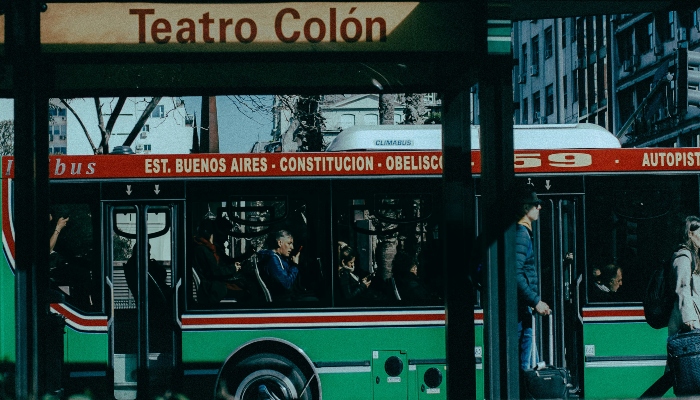
Image credit: Thomas Adamo Salvo for Unsplash
Riding Like a Local – Pros and Cons
- You experience the city like a local (a Porteño).
Expect crowded Subte carriages during peak hours, busy bus stops, and everyday scenes unfolding around you.
- Bus rides reveal neighborhood life you might otherwise miss.
From murals and street markets to small corner cafés, colectivos often pass through areas that tourist routes skip.
- It’s ideal for reaching places beyond the main tourist circuit.
Once you’re familiar with the layout, public transport is excellent for short hops or exploring lesser-visited barrios.
- The trade-off: complexity and comfort.
Rush-hour crowds can be intense, buses can get hot, and signage or announcements may be confusing if you don’t speak Spanish.
- New visitors rely heavily on apps to navigate.
Screenshots, route planners, and GPS become essential tools to avoid overshooting a stop or taking an inefficient route.
- Not always the best option late at night or with luggage.
In these situations, many travelers prefer taxis or ride-hailing services for convenience and safety.
- Not getting additional benefits like combo packages with public transport.
If you ride with a tourist bus you can get add-ons like Buenos Aires wine + sightseeing package included in your ticket, which is not possible for any kind of public transport network.
Tourist Bus vs Public Transport in Buenos Aires – Which One Fits Your Trip?
Comparing the Buenos Aires tourist bus with the city’s public transport really comes down to how you like to travel. The tourist bus is built for ease: you sit back, listen to stories about the city, and follow a loop that strings the headline sights together without you having to think about maps or connections. It’s especially helpful if you’re short on time or simply want your first day to feel effortless.
Public transport is a different experience altogether. It’s cheaper—dramatically so—and it gives you the freedom to duck into neighborhoods the tourist bus never touches. But it also asks more of you. You’ll need to handle crowds, navigate routes, and occasionally guess which bus stop is the right one when the signage feels vague.
Most travelers find a balance that works best. Spend your first full day on the tourist bus to understand how the city fits together, get your bearings, and see a handful of big sights without rushing. Once you’ve mapped the city in your head, switch to the Subte and colectivos to explore the places that caught your interest. It’s an approach that blends comfort with curiosity—an easy overview followed by the freedom to wander.
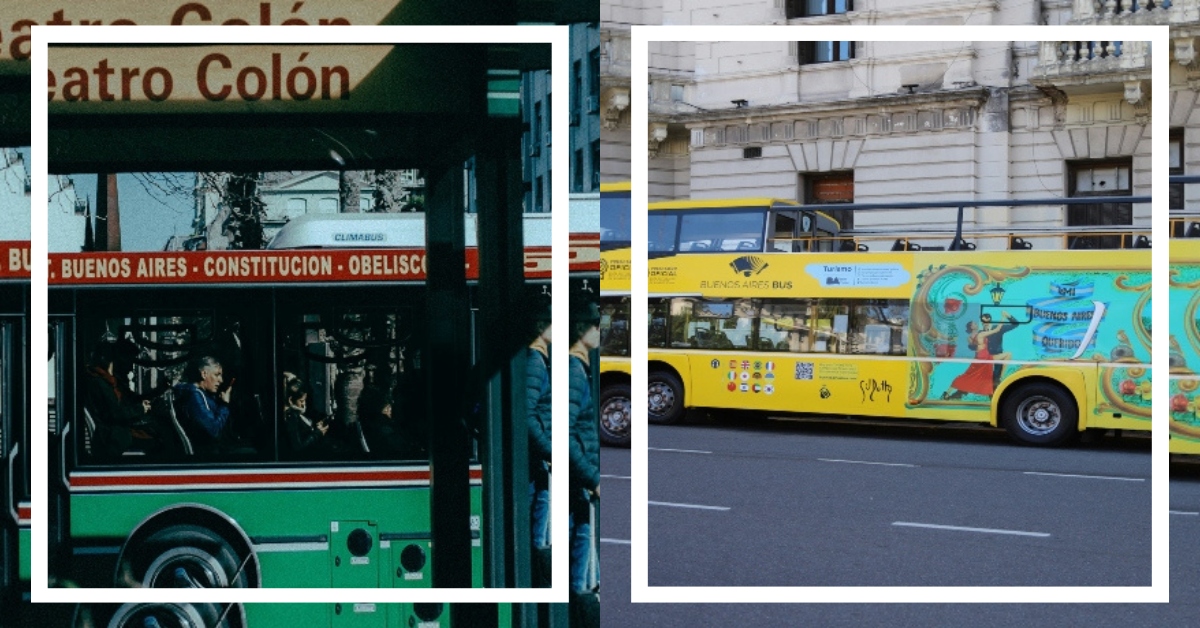
At-a-Glance: Who Should Choose What?

Practical Tips to Make the Most of Both
If You Choose the Buenos Aires Tourist Bus
- Start early to complete a full loop and still have time to hop off at your favorite stops.
- Carry water, sunscreen, and a hat if you plan to sit on the open-top deck in warmer months.
- Keep a light layer or shawl handy when moving between air-conditioned indoor attractions and the breezy top deck.
- Plan your hop-offs in advance so you don’t miss the stops you’re most excited about.
If You Rely on Public Transport
- Buy a SUBE card as soon as you arrive and keep it topped up.
- Download at least one navigation app (with offline-friendly features) to avoid confusion.
- Skip heavy rush-hour windows if possible—both the Subte and buses get very crowded.
- Keep your valuables secure, especially on busy lines and during peak times.
- Use taxis or ride-hailing late at night or when carrying luggage for added convenience and safety.
- A helpful strategy: use the tourist bus during the day to get oriented, then switch to public transport for shorter evening trips once you’re familiar with the neighborhoods.
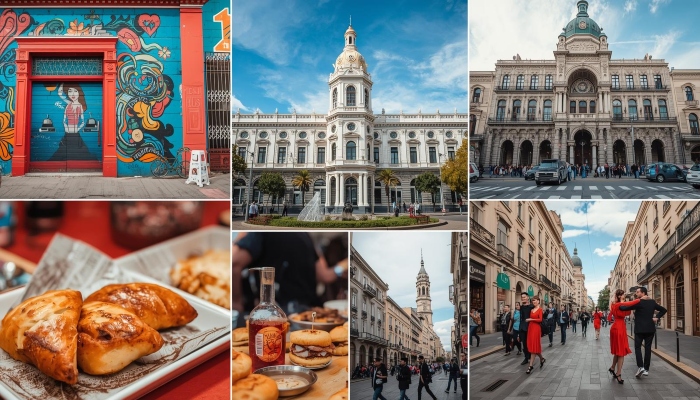
Final Thoughts – See Buenos Aires Your Way
Choosing between the Buenos Aires tourist bus and public transport really depends on the kind of experience you want. The Buenos Aires city bus for tourists is ideal if you’re looking for an easy, scenic introduction to the city—one loop connects the major sights without the need to plan routes or navigate apps. Public transport, meanwhile, offers a richer sense of local life: it’s cheaper, more flexible, and gives you a front-row view of how Porteños move through their day. Many travelers blend the two, using the tourist bus first to understand the city’s layout, then switching to the Subte or colectivos once the neighborhoods start to feel familiar. Either way, the true joy lies beyond the transport itself—in the cafés, plazas, markets, and waterfronts where Buenos Aires shows its character.
